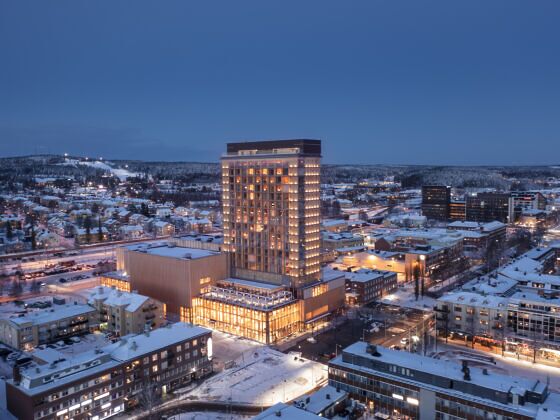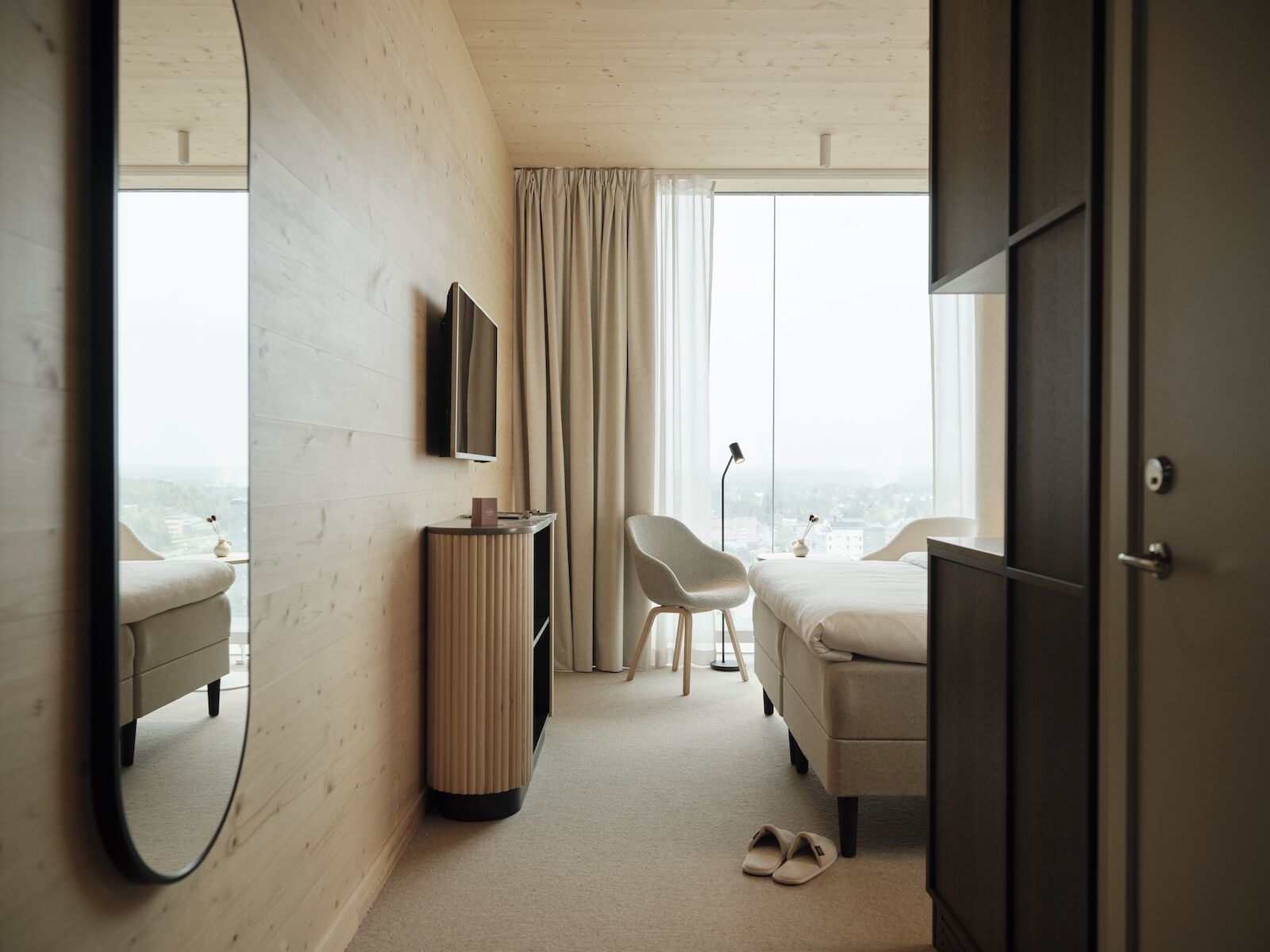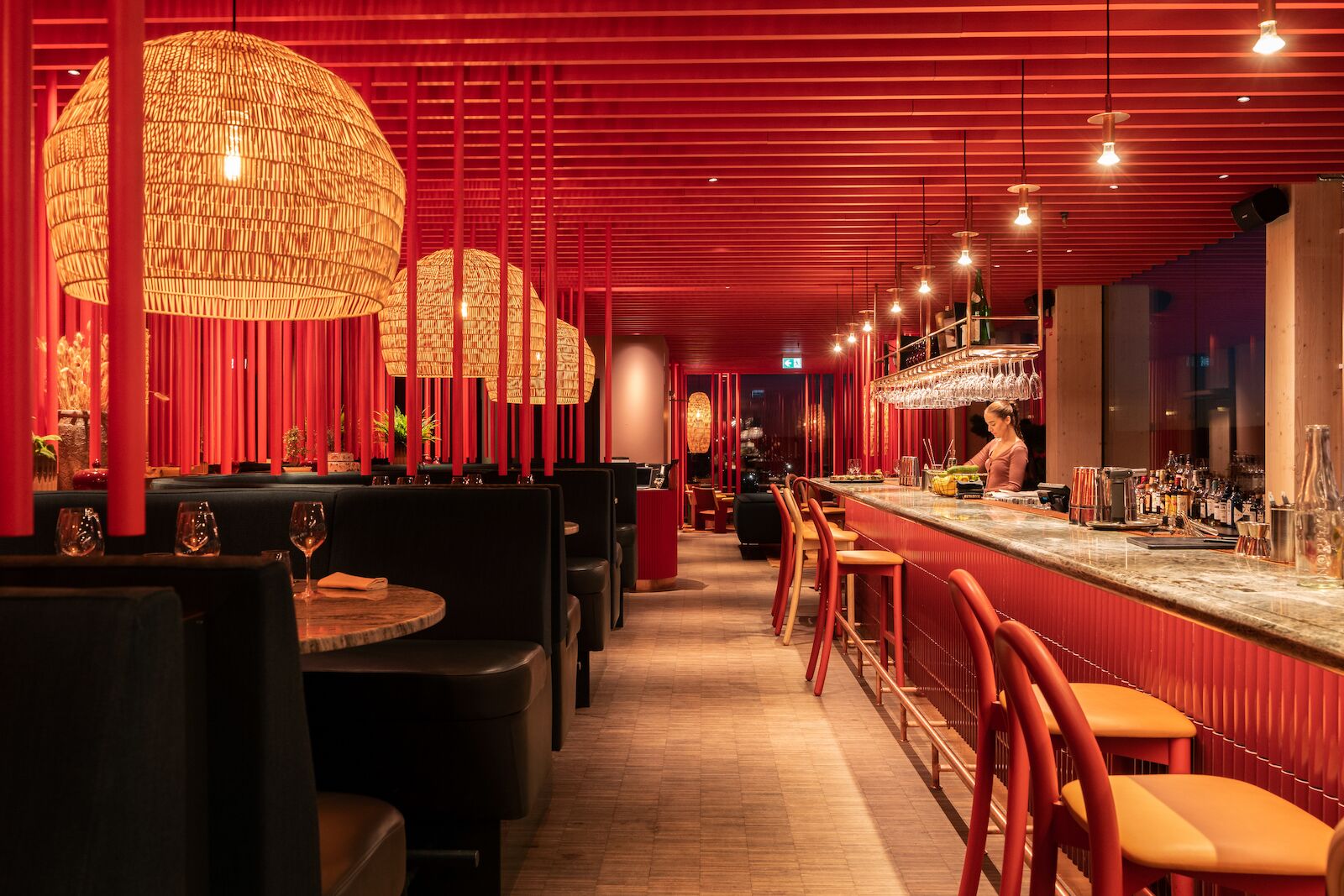The drinks at Miss Voon come with a view, a stunning panorama of twinkling lights fading into the vast darkness of Swedish Lapland.
The deep reds of this rooftop Asian bistro seem the ideal environment for a menu of Japanese whiskey cocktails and artfully sliced sashimi. But in addition to the usual aroma of faint soy and muted seafood, this sushi den has distinct wooden notes, like someone stuck a Japanese restaurant inside a Nordic sauna.
That’s because Miss Voon isn’t just any swanky hotel rooftop bar. It’s the rooftop bar at the Wood Hotel in Skelleftea, Sweden, a landmark, 20-story testament to sustainable architecture, constructed almost completely from local timber. And it just might be the most intriguing new building in all of Europe.




